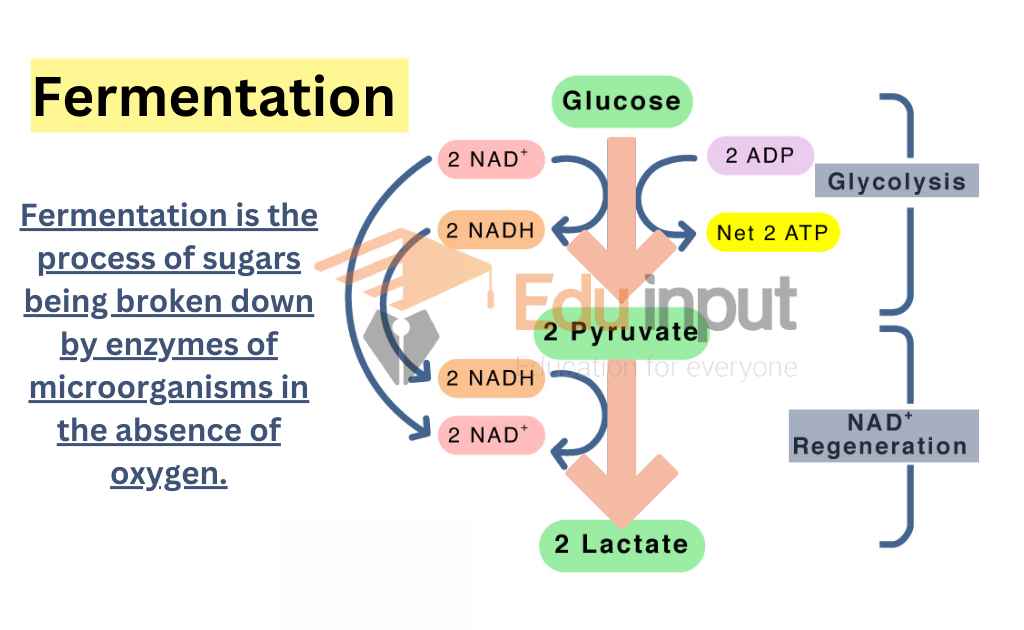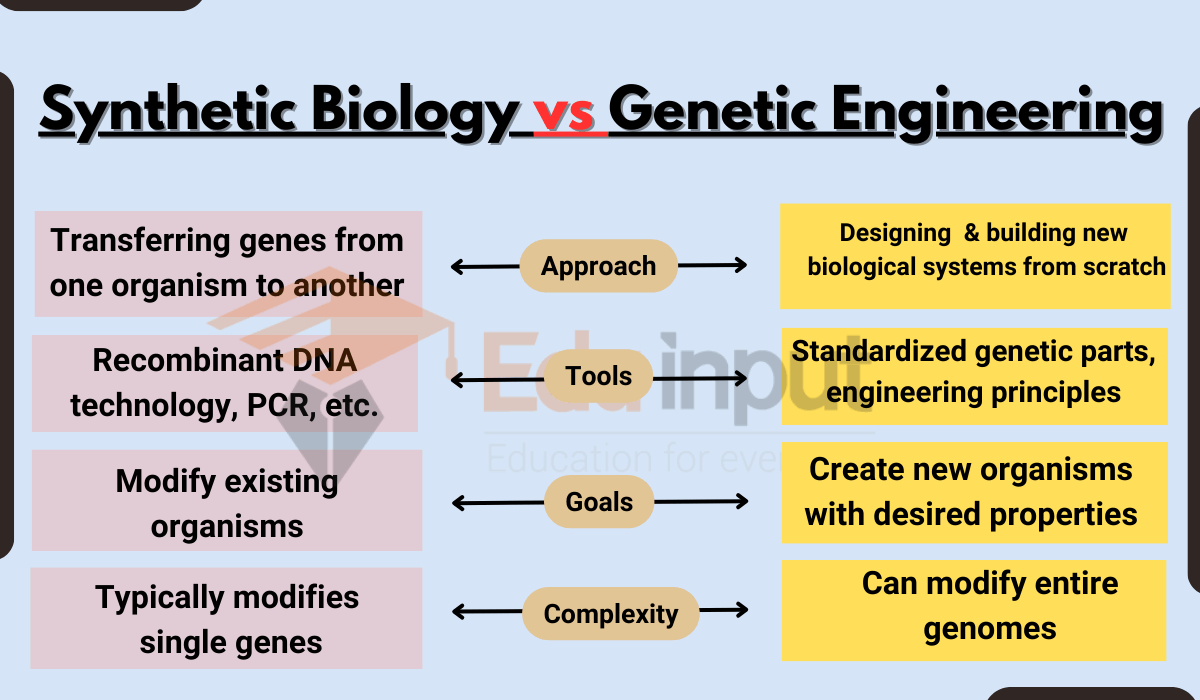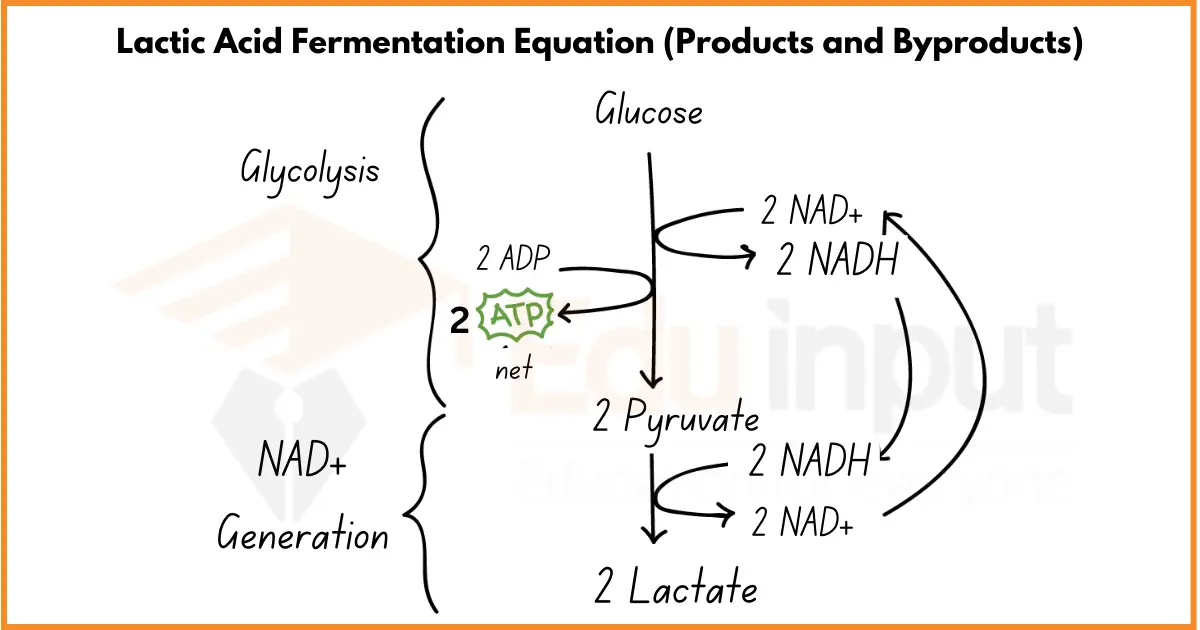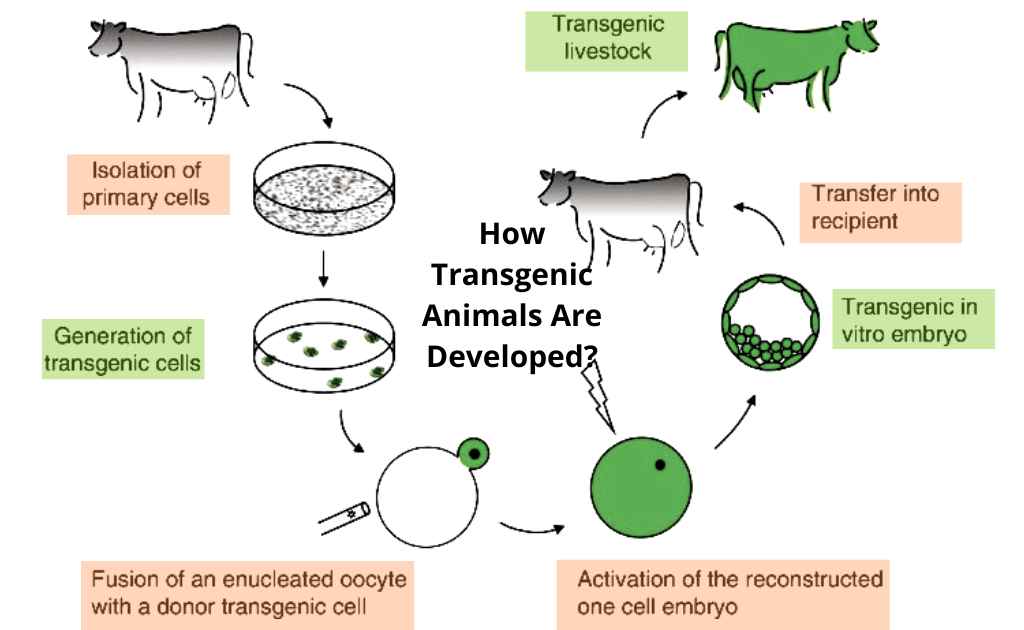What is Fermentation?-Steps, Types, And Examples
Fermentation is the chemical breakdown of a sugars by microorganisms, such as bacteria or yeast, resulting in the production of gas, heat, or other byproducts.
When the anaerobic microbes start working, Carbon dioxide makes bubbles (like in soda) and sometimes they convert it into alcohol. In muscle cells, fermentation produces lactic acid.
In the Fermentation process, anaerobic microbes use enzymes to convert starch or sugars into alcohol or acids. This process releases energy. Ancient people didn’t have any idea about it, but thanks to Biotechnology the phenomenon is known now. In the modern world, it is one of the most important applications of Biotechnology.

What is Fermentation in Biology?
In biology, fermentation is a metabolic process that converts carbohydrates, such as sugars, into simpler substances, such as alcohol or acids, through the action of microorganisms or enzymes. It occurs in the absence of oxygen and serves as an alternative pathway for energy production.
For example, fermentation is used to make pickles, yogurt, and alcohol like wine and beer. Even our bodies use fermentation in the stomach to break down food.
Examples of fermented food
Here are some examples of fermentation:
- Yogurt
- Sauerkraut
- Kimchi
- Pickles
- Kefir
- Sourdough bread
- Miso
- Tempeh
- Kombucha
- Cheese (e.g., cheddar, gouda)
Fermenting Agents
There are various agents that are used in fermentation, which can be living or non-living. These agents play important role in the metabolic process of producing ATP anaerobically. Both prokaryotic and eukaryotic cells can perform fermentation.
Living Fermenting Agents
Examples of living fermenting agents include:
- Yeast -Saccharomyces cerevisiae (used in the brewing and baking industries)
- Lactic Acid Bacteria (used in preservation of fermented foods like yogurt, sauerkraut, and pickles)
- Acetobacter (used in the production of vinegar)
- Propionibacterium (used in the fermentation of Swiss cheese)
Non Living Fermenting Agents
Different chemicals are used as fermentation agents that work aerobically. These are:
Here is a list of chemicals used as fermentation agents that work aerobically:
- Phenols (Used in certain aerobic fermentation processes)
- Esters (Employed as fermentation agents in aerobic conditions)
- Acids (Including lactic acid, acetic acid, and citric acid, these are utilized in aerobic fermentation processes)
Fermentation Process
Fermentation occurs in two steps:
Glycolysis
Glycolysis is the initial step of fermentation where glucose or other sugars are converted into pyruvate molecules, generating a small amount of ATP. In this step;
- Glucose, a type of sugar, is taken into the cell and converted into glucose-6-phosphate.
- Glucose-6-phosphate is further converted into fructose-6-phosphate.
- Fructose-6-phosphate is then changed into fructose-1,6-bisphosphate.
- Fructose-1,6-bisphosphate splits into two molecules called glyceraldehyde-3-phosphate.
- Glyceraldehyde-3-phosphate undergoes oxidation and turns into 1,3-bisphosphoglycerate.
- 1,3-bisphosphoglycerate releases a phosphate group, creating ATP (a form of energy) and forming 3-phosphoglycerate.
- 3-phosphoglycerate is transformed into pyruvate, producing even more ATP and NADH (a coenzyme that helps with energy transfer).
Fermentation Pathway
In fermentation, there are two main pathways.
In alcoholic fermentation,
- Pyruvate, produced from glycolysis, is converted into acetaldehyde.
- During this conversion, carbon dioxide is released.
- Acetaldehyde is then transformed into ethanol (alcohol).
- NADH is utilized to facilitate this conversion.
- This pathway is commonly found in yeasts and certain bacteria, and it is responsible for the production of alcoholic beverages like beer and wine.
In lactic acid fermentation,
- Pyruvate, produced from glycolysis, is directly converted into lactic acid.
- Unlike in alcoholic fermentation, no carbon dioxide is released in this pathway.
- The conversion of pyruvate to lactic acid is facilitated by NADH.
- This pathway is prevalent in certain bacteria and muscle cells.
- It plays a significant role in the production of fermented foods like yogurt and sauerkraut.
Types of Fermentation
There are two main types of fermentation based on the product it forms:
Alcoholic Fermentation
Alcoholic fermentation is a process that converts sugars such as glucose into ethanol and carbon dioxide.
1. It starts with the splitting of glucose through glycolysis, which produces two molecules of pyruvate and two molecules of ATP.
2. The pyruvate is then further broken down into acetaldehyde, carbon dioxide, and ethanol.
3. This process also requires the electrons from NADH and results in the generation of NAD+.
Example Of Alcoholic Fermentation
In bread, yeast ferments sugars in the dough and releases carbon dioxide as a byproduct. This carbon dioxide causes the dough to rise and creates bubbles in the bread. Yeast uses alcoholic fermentation to produce energy and carbon dioxide is the waste product.
Lactic Acid Fermentation
Lactic acid fermentation is a metabolic process that converts sugars into lactic acid using enzymes.
1. It is carried out by certain bacteria, such as the bacteria in yogurt, and also by muscle cells during intense physical activity.
2. The process starts with glycolysis, which produces two molecules of pyruvate and two molecules of ATP.
3. The pyruvate is then reduced using the electrons carried by NADH to produce lactic acid.
4. Unlike alcoholic fermentation, there is no carbon dioxide production in this process.
Example Of Lactic Acid Fermentation
Lactic acid fermentation is used in the production of sourdough bread, where wild yeasts and lactic acid bacteria are used to ferment the dough. The lactic acid bacteria break down sugars in the dough producing lactic acid which gives the bread its characteristic sour taste.
The acidity also helps preserve the bread, making it last longer than bread made with commercial yeast. Additionally, the lactic acid bacteria contribute to the flavor and texture of the bread.
Advantages and Disadvantages of Fermentation
Here are some of the advantages and disadvantages of fermentation:
Advantages of Fermentation
- It is a relatively simple process that can be carried out in a variety of conditions.
- It does not require oxygen, which makes it a useful process in food production and other industries where oxygen is not available.
- It can be used to produce a variety of products, including alcohol, acids, and gases.
- It can be used to preserve food.
- It can be used to improve the flavor and texture of food.
- It can be used to produce probiotic foods that have health benefits.
Disadvantages of Fermentation
- The products of fermentation can be harmful if consumed in large quantities. For example, alcohol can be toxic if consumed in excess.
- Fermentation can produce byproducts that can have a negative impact on the environment. For example, the production of alcohol can release greenhouse gases into the atmosphere.
- Fermentation can be a slow process, which can make it impractical for some applications.
- Fermentation can be susceptible to contamination by harmful bacteria.
Latest Research About Fermentation
- Scientists developed a simple method to correct measurements of fermentation losses in laboratory silos caused by gaseous fermentation products. The method involves estimating the amount of retained CO2 based on the difference between figures obtained by measuring fermentation gases collected directly or by weighing the silo at the beginning and end of the process. [1]
- Precision fermentation, combining genome-based technologies and traditional fermentation, is transforming food production. Synthetic biology, downstream processing, and food science support the development of fermentation-derived food ingredients. The business, markets, patents, and science behind precision fermentation for proteins, fats, and oligosaccharides are discussed, emphasizing the need for a transdisciplinary approach and multistakeholder engagement for sustainable food production. [2]
- Scientists have investigated the production of ethanol from biomass through gasification and fermentation processes. [3]
- Scientists investigated the effect of fermentation using Saccharomyces cerevisiae on the biological properties of cinnamon (Cinnamomum cassia). The study revealed that the extract of S. cerevisiae-fermented cinnamon (S.C.FC) had higher antioxidant properties compared to the non-fermented cinnamon. [4]
What is fermentation in simple words?
Fermentation is a metabolic process that converts sugar into alcohol, acids, or gases in the absence of oxygen.
What is the process of fermentation?
The process of fermentation involves the conversion of organic compounds into simpler substances, such as alcohol or acids, through the action of microorganisms.
Why is it called fermentation?
It is called fermentation because it was initially associated with the bubbling or foaming action observed during the process, which resembles “fervere” in Latin, meaning “to boil.”
Is fermentation alcoholic?
Yes, Fermentation can be alcoholic, as it can produce alcohol as a byproduct, but it can also produce other substances such as acids or gases.
What are the two stages of fermentation?
The two stages of fermentation are primary fermentation, where sugars are converted into alcohol or acids, and secondary fermentation, where any remaining sugars are further metabolized.
what is the purpose of fermentation?
The purpose of fermentation is to produce energy in the absence of oxygen and to convert complex organic compounds, such as sugars, into simpler substances like alcohol, acids, or gases.
What do alcohol fermentation, acetyl COA formation, and the Krebs cycle have in common?
Alcohol fermentation, acetyl CoA formation, and the Krebs cycle are all processes involved in cellular metabolism that generate energy by breaking down organic molecules.
Which is a commercial use for lactic acid fermentation?
A commercial use for lactic acid fermentation is in the production of yogurt and other fermented dairy products.
What common foods involve the process of fermentation?
Common foods that involve the process of fermentation include yogurt, sauerkraut, kimchi, pickles, kefir, sourdough bread, miso, tempeh, and kombucha.
How long does fermentation take?
The duration of fermentation can vary, ranging from a few hours to several weeks or even months. However, it is important to note that the exact duration depends on various factors such as the type of fermentation, temperature, ingredients used, and desired outcome.
Why is fermentation important?
Fermentation is important because it preserves food, enhances flavor, improves nutrition, aids digestion, and increases dietary diversity.
Does fermentation require oxygen?
No, fermentation does not require oxygen. In fact, fermentation is an anaerobic process, which means that it occurs in the absence of oxygen. This is in contrast to aerobic respiration, which requires oxygen.







Leave a Reply